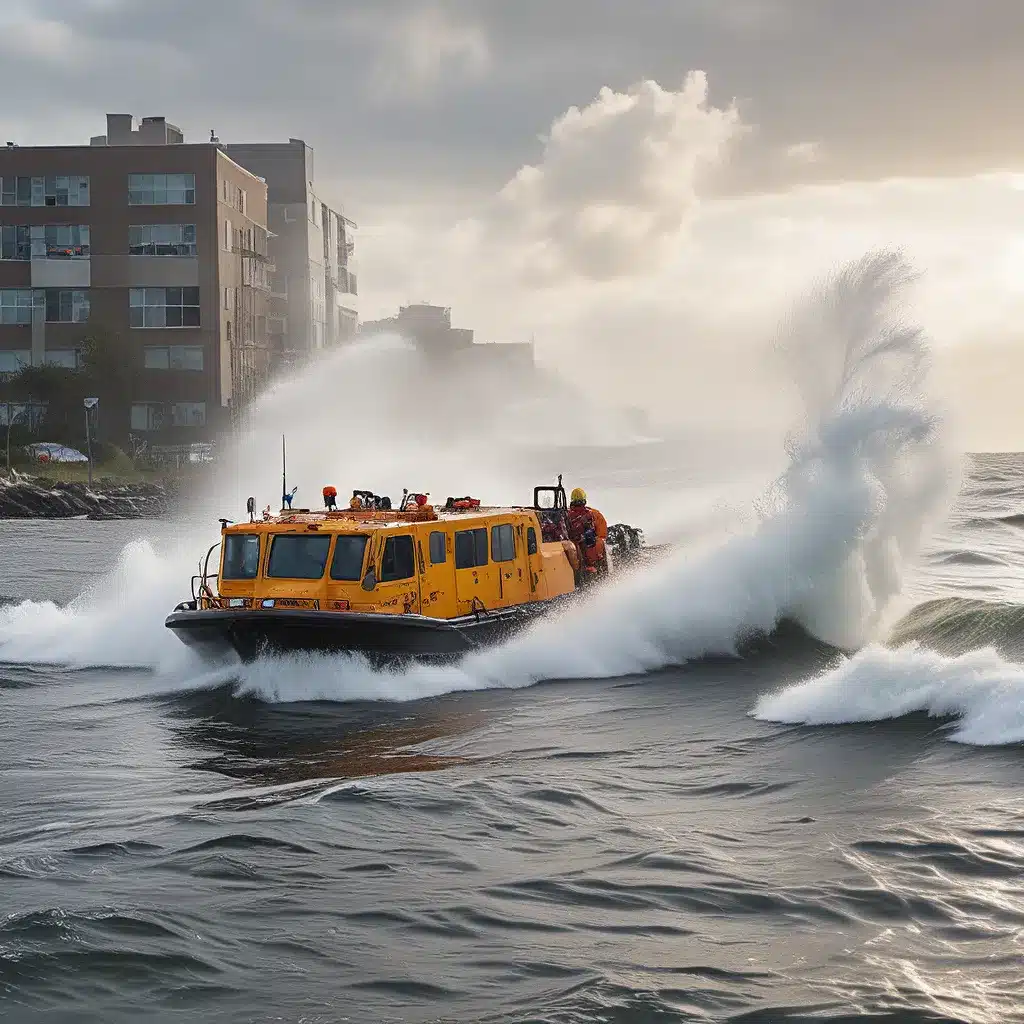
Diving Into the Unknown
Picture this: You’re standing on the banks of a raging river, the water churning and swirling with debris. Suddenly, you receive a distress call – a boat has capsized, and people are stranded in the turbulent currents. Your heart races as you realize you’re the only ones who can respond in time.
This is the type of scenario that keeps emergency response teams on their toes, constantly ready to navigate the unpredictable waters of disaster. As someone who has been part of these teams for years, I can attest that it’s not for the faint of heart. But it’s a responsibility we take on with unwavering commitment, knowing that lives are on the line.
When the alarm sounds, there’s no time to hesitate. You and your crew quickly suit up, grab your specialized rescue gear, and race towards the scene. The Zodiac Milpro Emergency Response Boat (ERB) is your lifeline – a vessel designed to handle the most treacherous conditions. With its rapid inflation system and inflatable drop-stitched floor, this boat can be deployed in just 3 minutes by a trained crew, ready to navigate through white water up to Class IV rapids.
Mastering the Art of Rapid Deployment
As we speed towards the incident, adrenaline surges through my veins. I can’t help but reflect on the countless hours of training and preparation that have led us to this moment. The Zodiac Milpro team has equipped us with the tools and knowledge to respond effectively, no matter the challenge.
The ERB range boasts features that make it a true workhorse in emergency situations. Its lightweight yet robust design, coupled with the inflatable floor, allows for quick and versatile deployment. Whether it’s a natural disaster, an oil spill, or a boating accident, this boat can handle it all.
But it’s not just the equipment that sets us apart. It’s the unwavering dedication of the crew, the countless hours spent honing our skills, and the unwavering commitment to saving lives. We train relentlessly, practicing everything from navigating through treacherous rapids to executing complex rescue maneuvers. And when the call comes, we’re ready to put those skills to the test.
Navigating the Unpredictable
As we approach the scene, the true extent of the situation becomes clear. The capsized boat is lodged against a fallen tree, the occupants clinging to the wreckage. The water is murky and rapidly flowing, making it difficult to assess the full extent of the hazards.
Without hesitation, we spring into action. The ERB’s responsive steering and high-pressure inflation system allow us to navigate the turbulent waters with ease, maneuvering around obstacles and positioning the boat for a safe rescue.
Marine debris can be a significant hazard in these situations, with abandoned vessels, derelict fishing gear, and other floating objects posing a real threat to both rescuers and victims. But our training has prepared us for such challenges, and we’re able to carefully assess and avoid these dangers as we close in on the stranded individuals.
As we reach the victims, we see the relief and gratitude in their eyes. It’s a moment that makes all the hard work and training worthwhile. With our specialized rescue equipment, we’re able to safely pull them aboard and transport them to shore, where emergency medical personnel are standing by.
Securing the Aftermath
The adrenaline rush slowly subsides as we return to shore, our mission accomplished. But the work is far from over. Now, we must ensure that the scene is secured and the area is safe for others.
Abandoned and derelict vessels can pose a significant hazard, blocking navigation channels and potentially leaking hazardous materials. We work closely with local authorities and environmental agencies to assess the situation and determine the appropriate course of action.
In some cases, we may need to deploy our specialized rescue tracks or sleds to access difficult-to-reach areas and safely remove any remaining debris or hazards. These inflatable platforms are designed to navigate the most challenging terrains, from mud and ice to shallow waters and unstable surfaces.
Lessons Learned and Continuous Improvement
As we reflect on the events of the day, we know that there is always room for improvement. We debrief as a team, discussing what went well, what could have been done differently, and how we can enhance our training and equipment to be even more prepared for the next emergency.
Inland Waters Inc., the company I’m proud to be a part of, is committed to staying at the forefront of emergency water response. We’re constantly researching new technologies, testing innovative solutions, and collaborating with experts in the field to ensure that we’re always ready to face the next challenge.
One of the ways we’re doing this is by partnering with organizations like the NOAA Marine Debris Program, which has created a series of emergency response guides to help coastal communities better prepare for and respond to marine debris-related disasters. These resources have been invaluable in shaping our own training and emergency protocols.
Conclusion: Embracing the Unpredictable
As I look back on the day’s events, I’m struck by the realization that no two emergency water responses are ever the same. Each situation presents its own unique set of challenges, and the only way to be truly prepared is to embrace the unpredictable.
But that’s what makes this work so rewarding. It’s the thrill of the unknown, the rush of adrenaline, and the knowledge that our actions can mean the difference between life and death. And with the right equipment, training, and team, we’re ready to tackle whatever comes our way.
So, the next time the alarm sounds, you can be sure that we’ll be there, ready to dive into the waves and navigate the uncharted waters of emergency response. It’s a responsibility we take on with pride, knowing that we’re making a real difference in the lives of those we serve.


